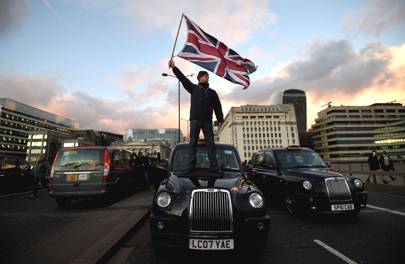Hello ladies and gents this is the Viking telling you that today we are talking about

From Bolt to Kapten, Uber's London rivals are plotting its downfall

Mourad was teaching languages at a secondary school in London when he decided to go part time for family reasons. In 2016, he started driving for Uber for extra money, mixing trips with shifts as a supply teacher. “At the beginning I liked it,” he says. “It was a very flexible way of working.”
The ride-hailing service launched in London in June 2012, and quickly took over. It wasn’t the first such product in the capital – Hailo’s app for black cab drivers predated Uber – but it quickly became dominant, particularly with the launch of UberX, the cheaper rides that moved the app on from its original focus on luxury. At one point in 2016, 30,000 Londoners a day were installing the app on their phones, eschewing iconic black cabs in favour of a Toyota Prius summoned with a tap.
But now, Uber’s stranglehold on the city is loosening. On Monday, Transport for London (TfL) announced its decision not to renew the company’s operating licence in the city, after granting it a short extension which expired this week. Uber will appeal meaning it can continue to operate for now, but its future in London is far from certain. And what’s bad for Uber will likely be good for pretenders to its throne.
At coworking spaces from Mayfair to Shoreditch, newcomers are taking chunks out of Uber’s market share, undercutting it on price, and promising a better deal for drivers. Today, there are several alternative ride-hailing apps operating in the city – Bolt, Kapten, ViaVan, Hailo, Wheely, Xoox and more. Mourad has set up a website – driverapplondon.co.uk – to help drivers navigate the muddle. London’s ride-hailing scene is fragmenting – both geographically and demographically. But are the new players really offering a ride-hailing revolution, or just more of the same?
For the tens of thousands of new drivers who signed up to the platform in the early years, Uber seemed to offer everything – in exchange for a hefty 25 per cent commission. But the drivers were always aware that their livelihoods dangled by a thin thread – their pay and working conditions depending on the whims of a multinational company with a reputation for bad behaviour. “Drivers were under a lot of pressure,” Mourad says. “If anything went wrong, if there was a complaint from a rider or something going wrong with a ride, we were at risk of being deactivated from the platform.”
Things started to change in September 2017. First, on September 7, Estonian start-up Taxify started operating in London – gaining a route into the city by purchasing an existing company that already had a private hire licence. But TfL quickly shut that down, resulting in an embarrassing retreat for Taxify. Then, a few weeks later, the regulator shocked the industry by rejecting Uber’s application to renew its licence to operate in London, kicking off a saga that has been rumbling on ever since – and which will now be settled in the courts.
I hope you liked this post and as always have a chilled day from the Viking.
Comments
Post a Comment